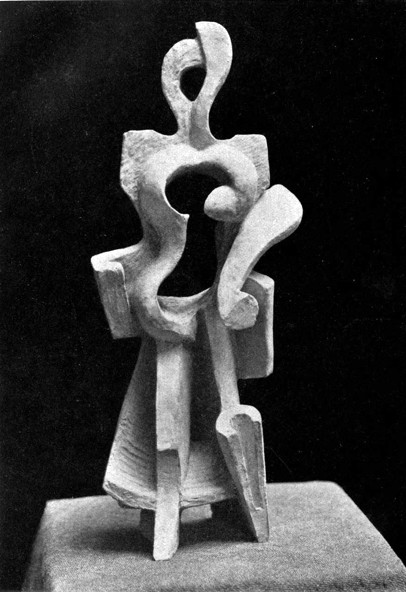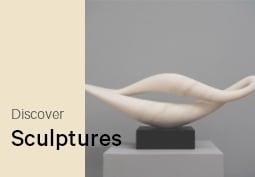Articles and features
Art Movement: Cubism.
The Radicality of Fragmentation

What is Cubist Art?
Cubism is one of the most influential art styles of the twentieth century, which radically broke away from the long-standing tendency in art to attempt to create the illusion of a real three-dimensional space from a fixed viewpoint on the two-dimensional canvas. Cubist artists and cubism art, in fact, emphasized the two-dimensional nature of the canvas instead of creating the illusion of depth. They achieved this by not using perspective and using tone (light and shadow) in a different way. By breaking down objects into different planes, the artists showed different points of view at the same time, in the same space, as such suggesting their three-dimensional form while also pointing to the two-dimensional flatness of the canvas.
Key dates: 1907-1914
Key regions: Paris
Key words: distinct planes, fragmentation, abstraction, muted colour palette
Key artists: Pablo Picasso (1881-1973), Georges Braque (1882-1963), Fernand Léger (1881-1955), Alexander Archipenko (1887-1964)
Cubism definition
In 1908, the French art critic Louis Vauxcelles coined the term Cubism after seeing Georges Braque’s landscapes, which he had painted in emulation of Paul Cézanne. Vauxcelles identified the geometric forms in the highly abstracted works as “cubes”. Cézanne, who was already painting things from slightly different points of view, is without a doubt seen as the forerunner of Cubism, but artists also took a great deal of inspiration from other sources, such as African primitive art and other non-Western sources. Picasso was particularly inspired by the highly stylised, non-naturalistic African tribal masks. In his words: “A head is a matter of eyes, nose, mouth, which can be distributed in any way you like.”
Origins of Cubism
In 1907 Paris, Pablo Picasso and Georges Braque met when Braque visited Picasso at his studio. This meeting marked the beginning of a very important friendship in the history of art. Together, the two artists developed Cubism art, a revolutionary new style of painting, which transformed the world into geometric shapes. Braque would later say about his friendship and working relationship with Picasso: “The things that Picasso and I said to one another during those years will never be said again, and even if they were, no one would understand them anymore. It was like being roped together on a mountain”.
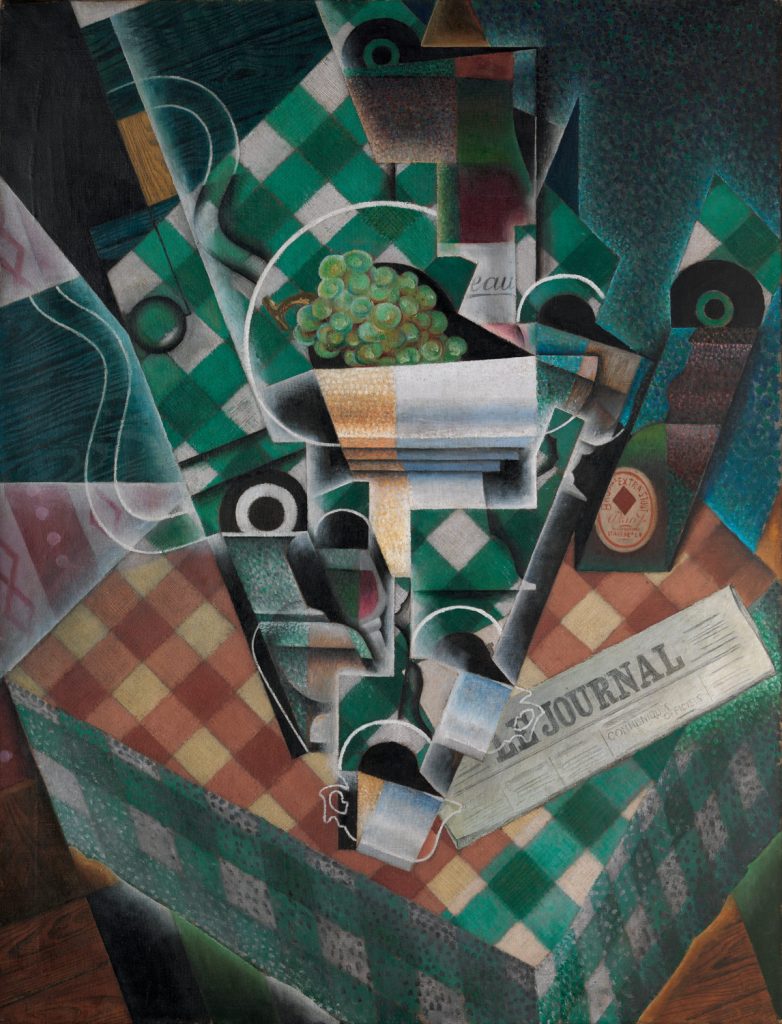
Analytical vs Synthetic Cubism
Cubism developed in two distinct phases: analytical cubism and (later) synthetic cubism. Analytical cubism art is considered to run from 1908-1912. The artworks look severe, and are made up of an interweaving of planes and lines in muted tones of blacks, greys and ochres. This simplified palette was chosen so as not to distract the viewer from the structure of the form and the density of the image at the centre of the canvas.
Synthetic cubism art is the later phase of cubism, dating from around 1912 to 1914, and characterised by simpler shapes and brighter colours. Synthetic cubism began when cubist artists started using textures and patterns in their paintings and experimenting with the collage form. This inclusion of real objects in art was the beginning of one of the important ideas in modern art, to work with already existing (readymade) objects.
Picasso and Braque’s favourite motifs during the period of Cubism were still lifes with musical instruments, bottles, pitchers, glasses, newspapers, playing cards, the human face and the human figure.
Famous Cubist Artists
Though the art movement’s principal players were its founders Pablo Picasso and Georges Braque, many other eventual cubist artists adopted this visual language, among whom were Fernand Leger, Juan Gris, Marcel Duchamp, Albert Gleizes, and Jean Metzinger.
Famous Cubist Artworks
Pablo Picasso, Les Demoiselles d’Avignon (1907)
Arguably one of the most famous Cubist artworks is Picasso’s 1907 Les Demoiselles d’Avignon. The stylisation and distortion in this painting were inspired by African art, which Picasso had first seen in person in 1907 at the ethnographic museum in the Palais du Trocadéro in Paris.
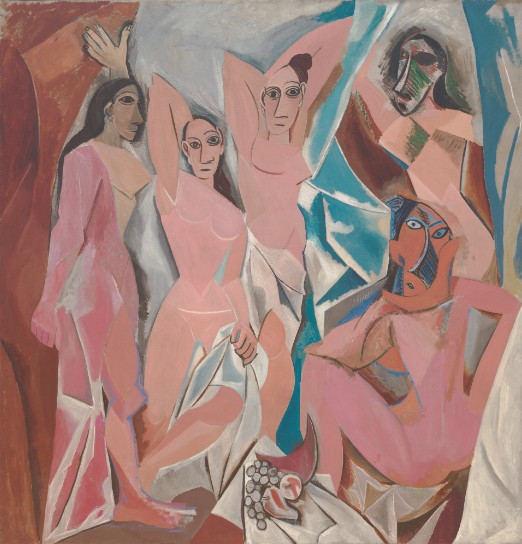
Pablo Picasso, Bottle of Vieux Marc, Glass, Guitar and Newspaper (1913)
With Bottle of Vieux Marc, Glass, Guitar and Newspaper (1913), the creator of Guernica realised a well-known example of a synthetic Cubist work of art. He uses light blues and whites and works with different textures in the collage form, including pieces of newspaper.
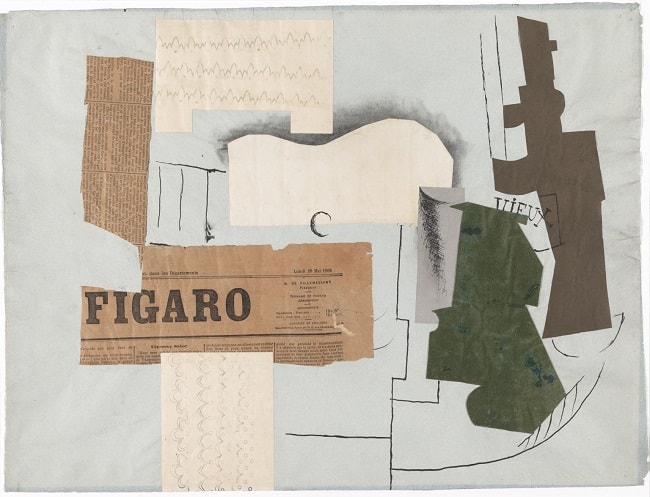
Georges Braque, Mandora (1909-1910)
Georges Braque’s Mandora (1909-1910) is a famous example of Cubism art from the analytical period – all dark, muted tones and interweaving planes depicting a small lute called a mandora.

Alexander Archipenko, Woman Walking (1912-1918)
Archipenko was one of the first artists to apply the principles of Cubism to sculpture, in pursuit of sculpting motion, space and time. Woman Walking (1912-1918), a dynamic female figure that suggests forward motion, is the perfect example of how, to him, immaterial space was a virtual form that represented universal change and spiritual energy.
Legacy
Cubism’s liberating formal concepts deeply influenced future art movements such as Dada and Surrealism. It was also the starting point for styles like Constructivism and Neo-Plasticism.
FAQ’s on Cubism
What is cubism?
Cubism is one of the most influential art movements of the 20th century, which broke with the tendency in art at the time to create the illusion of a three-dimensional space from a fixed viewpoint on a two-dimensional canvas. In Cubism, the two-dimensional aspect of the canvas was instead emphasised by breaking down objects into different planes.
Who founded cubism?
Pablo Picasso and Georges Braque founded Cubism in the early 1900s in Paris, though it was the French art critic Louis Vauxcelles who coined the term Cubism after seeing Braque’s landscapes.
Which famous artist was notable for using cubism?
Pablo Picasso, Georges Braque and Fernand Léger.
When did cubism start
Cubism started in 1907 with the painting Demoiselles D’Avignon by Picasso.
Relevant sources to learn more
Read more about Art Movements and Styles Throughout History here
Artistic Collaborations: Pablo Picasso & Gjon Mili
Read more about the art movement: Orphism – Between modernity and spirituality
